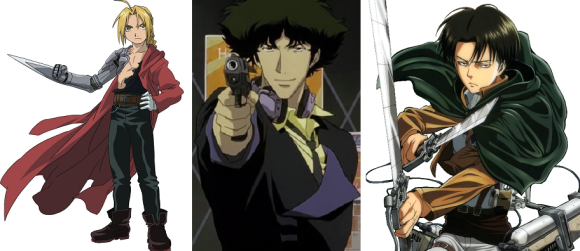
There are a lot of things that surprise newcomers to anime. Why are the characters’ eyes so big? How come everyone has funky hair colors? What’s up with all the panty shots?
A lot of those have simple answers. The giant eyes are an influence from legendary manga artist Osamu Tezuka, who was in turn inspired by classic Disney designs. Anime artwork uses a relatively small number of lines in drawing faces, and a large palette of hair colors is a quick and easy way to differentiate otherwise similar-looking characters. Male anime fans in Japan are extraordinarily open about their love of undies.
With those questions out of the way, let’s take a look at something a bit less cut-and-dried: Why are there so many anime characters with non-Japanese names?
For those not used to it, it can be a little startling to sit down to watch cartoons from Japan, only to find the hero is named Ed, Spike, or Eren. In a case of things coming full circle, anime enthusiasts in Japan have started to become aware of the fact that foreign fans are puzzled over how many major figures in Japanese animation have Western-sounding names. Website Byokan Sunday culled the following theories put forth by Japanese Internet users.
1. It makes it easier for the show to become popular overseas
Overseas revenue sources, whether through home video sales or broadcast and streaming license fees, are becoming increasingly important to Japanese content creators. Of course, it’s hard to get people to remember to buy your DVDs when they can’t remember the main character’s name, and the logic behind this explanation goes that avoiding Japanese names makes them easier for foreign fans to remember.
While that reasoning definitely has some plausibility, Naruto, Bleach, and Puella Magi Madoka Magica each went on to international success despite the monikers of protagonists Naruto Uzumaki, Ichigo Kurosaki, and Madoka Kaname, who have unusual names even by Japanese standards. In light of that, we’re not sure how big a role overseas sales potential plays in naming anime leads.
2. The character was originally inspired by a Westerner
This likely had a bigger impact during the golden era of the Hollywood action blockbuster, but the fact remains that mainstream Japan consumes far more Western movies and TV programs than vice-versa. With people accustomed to seeing non-Japanese action heroes and on-screen adventurers, some just don’t feel a need to make their anime leads the same ethnicity as the core audience.
The pool of foreign acting talent in Japan may not be large enough for live-action producers to fill their works with surrogates for their favorite international stars, but anime is a different story. Sometimes the homage goes beyond their physical appearance, and the creator may even give the character part of the original inspiration’s name as a tip of the hat.
3. The creator doesn’t want to designate an ethnic background for the character
While giving a character a set ethnicity can help flesh out their back story, that same informational tidbit can also backfire and become a distraction if it’s incorrectly or inadequately portrayed. On the other hand, picking a name that’s not only not Japanese, but doesn’t seem to indicate any nationality at all, leaves all storytelling options open.
For example, Space Dandy’s Dandy (who is a dandy, in space) has the pompadour, jacket, and slouch of a Japanese rogue, which means if the director wants him to spend a whole episode wearing a traditional fundoshi loincloth or searching for an inter-dimensional ramen joint, he can. But if in a different episode he wants Dandy to spoof High School Musical and attend an American-style prom, he can do that too, all without having to take time out to worry about how a Japanese character’s sensibilities would make him react in that culturally unfamiliar situation. By giving the character a name with no real ethnicity, he can be whatever the script needs him to be at any time.
4. Using a Japanese name makes the world seem too realistic
Between the lack of extra costs for building sets and the relatively young age of the audience, a lot of anime falls into the fantasy and science fiction genres. To some creators, though, the escapist fun and drama would be spoiled by giving the characters Japanese names, which, being what the primary Japanese audience is most familiar with, seem the most immediately real.
Say you’re making a space opera, and aren’t trying to directly connect it to any historical political or military conflicts on Earth. That becomes harder to do if you name the captain of your space carrier Takeru Yamada. In this anime’s world, did Japan revise its constitution so that it would have an active military again? What sort of societal conditions brought that about, and what were the repercussions? Those sort of questions might be difficult for Japanese viewers to ignore, and have the potential to overshadow the story the director is actually trying to tell.
On the other hand, name the captain Bright Noa, like in the original Mobile Suit Gundam, and you can shift the focus back to the here and now of giant robot warfare.
Likewise, most anime fantasy settings have a distinctly European flavor to them. Name your swordsman Yoshihiko, and people will be thinking about if this world has an equivalent to Japan. If so, why did Yoshihiko leave his homeland? What caused him to get rid of his samurai lamellar and buy a suit of Western-style plate mail? If you don’t want the narrative to get bogged down dealing with all that, why not just sidestep the whole issue by naming him Gourry?
▼ Problem solved (now get cracking on a new season of Slayers, please).
Which leads us to the question, have you ever met someone named Bright or Gourry? In creating a deliberate break from reality, often the names used in anime don’t exist in any culture. Magic Knight Rayearth named most of its cast after cars. Knights of Ramune did the same thing with beverages.
Sometimes, this even sends a clear message of what to expect. The 2007 TV series Baccano largely takes place in the seemingly ordinary confines of 1930s New York, but one of your first clues about the supernatural events that lie ahead comes while the cast of characters’ names appear during the opening animation, and you see this.
Seriously, any time you’re watching a show and a guy named Jacuzzi Splot shows up, you know things are about to get weird.
Source: Byokan Sunday
Top image: Comic Vine, My Anime List, Get Cartoon Wallpaper
Insert images: Wikia, Get Cartoon Wallpaper (2), WordPress, HD Wallpapers, Wikia (2, 3), Planet Minecraft


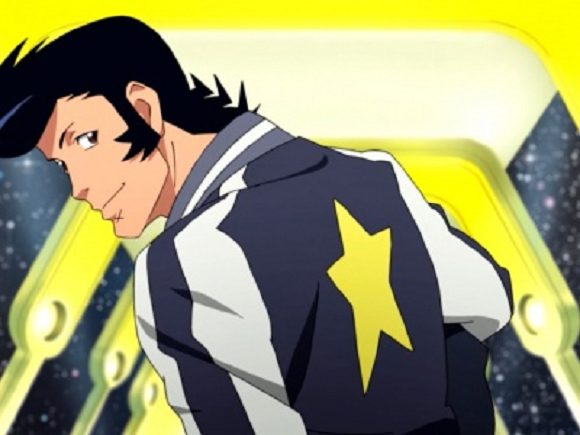
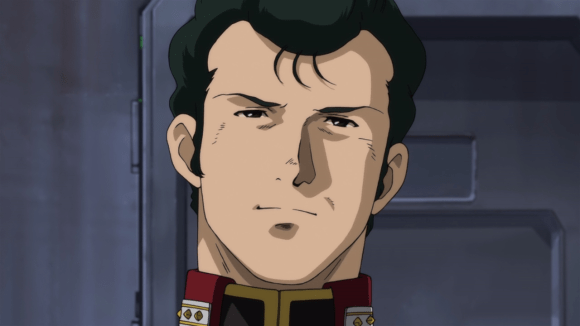
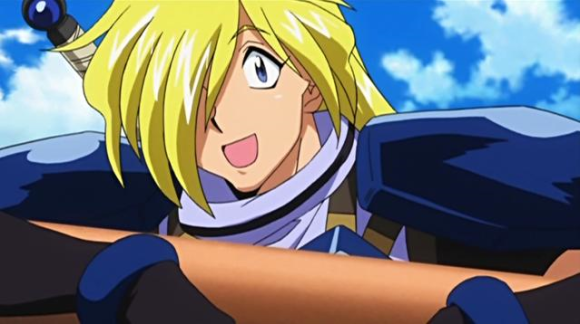
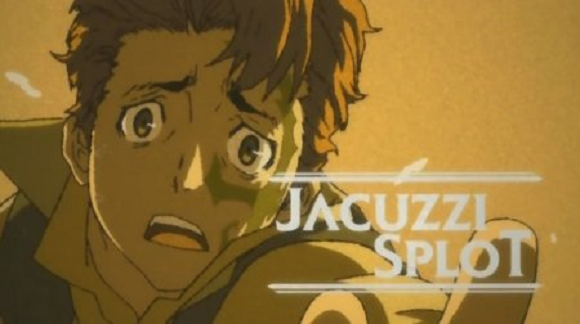
 Wear black – The 20 most memorable anime deaths, as chosen by fans
Wear black – The 20 most memorable anime deaths, as chosen by fans New Pikachu character coming to Pokémon anime series after Ash’s retirement
New Pikachu character coming to Pokémon anime series after Ash’s retirement For millions of people, anime actress Hiromi Tsuru was more than a voice, she was “by our side”
For millions of people, anime actress Hiromi Tsuru was more than a voice, she was “by our side” McDonald’s new Happy Meals offer up cute and practical Sanrio lifestyle goods
McDonald’s new Happy Meals offer up cute and practical Sanrio lifestyle goods All-you-can-drink Starbucks and amazing views part of Tokyo’s new 170 meter-high sky lounge
All-you-can-drink Starbucks and amazing views part of Tokyo’s new 170 meter-high sky lounge More foreign tourists than ever before in history visited Japan last month
More foreign tourists than ever before in history visited Japan last month The oldest tunnel in Japan is believed to be haunted, and strange things happen when we go there
The oldest tunnel in Japan is believed to be haunted, and strange things happen when we go there Is the new Shinkansen Train Desk ticket worth it?
Is the new Shinkansen Train Desk ticket worth it? Starbucks reopens at Shibuya Scramble Crossing with new look and design concept
Starbucks reopens at Shibuya Scramble Crossing with new look and design concept Beautiful Sailor Moon manhole cover coasters being given out for free by Tokyo tourist center
Beautiful Sailor Moon manhole cover coasters being given out for free by Tokyo tourist center Beautiful new Final Fantasy T-shirt collection on the way from Uniqlo【Photos】
Beautiful new Final Fantasy T-shirt collection on the way from Uniqlo【Photos】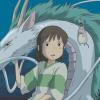 Haku is…Chihiro’s dead brother? Studio Ghibli fans blown away by Spirited Away theory
Haku is…Chihiro’s dead brother? Studio Ghibli fans blown away by Spirited Away theory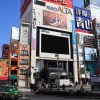 One of Tokyo’s most famous meeting-spot landmarks is closing for good
One of Tokyo’s most famous meeting-spot landmarks is closing for good Disney princesses get official manga makeovers for Manga Princess Cafe opening in Tokyo
Disney princesses get official manga makeovers for Manga Princess Cafe opening in Tokyo We try out “Chan Ramen”, an underground type of ramen popular in the ramen community
We try out “Chan Ramen”, an underground type of ramen popular in the ramen community Foreign English teachers in Japan pick their favorite Japanese-language phrases【Survey】
Foreign English teachers in Japan pick their favorite Japanese-language phrases【Survey】 There’s a park inside Japan where you can also see Japan inside the park
There’s a park inside Japan where you can also see Japan inside the park Japanese convenience store packs a whole bento into an onigiri rice ball
Japanese convenience store packs a whole bento into an onigiri rice ball Studio Ghibli releases Kiki’s Delivery Service chocolate cake pouches in Japan
Studio Ghibli releases Kiki’s Delivery Service chocolate cake pouches in Japan Japan’s bone-breaking and record-breaking roller coaster is permanently shutting down
Japan’s bone-breaking and record-breaking roller coaster is permanently shutting down New definition of “Japanese whiskey” goes into effect to prevent fakes from fooling overseas buyers
New definition of “Japanese whiskey” goes into effect to prevent fakes from fooling overseas buyers Foreign passenger shoves conductor on one of the last full runs for Japan’s Thunderbird train
Foreign passenger shoves conductor on one of the last full runs for Japan’s Thunderbird train Our Japanese reporter visits Costco in the U.S., finds super American and very Japanese things
Our Japanese reporter visits Costco in the U.S., finds super American and very Japanese things Kyoto bans tourists from geisha alleys in Gion, with fines for those who don’t follow rules
Kyoto bans tourists from geisha alleys in Gion, with fines for those who don’t follow rules Studio Ghibli unveils Mother’s Day gift set that captures the love in My Neighbour Totoro
Studio Ghibli unveils Mother’s Day gift set that captures the love in My Neighbour Totoro Domino’s Japan now sells…pizza ears?
Domino’s Japan now sells…pizza ears? New Japanese KitKat flavour stars Sanrio characters, including Hello Kitty
New Japanese KitKat flavour stars Sanrio characters, including Hello Kitty Sales of Japan’s most convenient train ticket/shopping payment cards suspended indefinitely
Sales of Japan’s most convenient train ticket/shopping payment cards suspended indefinitely Sold-out Studio Ghibli desktop humidifiers are back so Totoro can help you through the dry season
Sold-out Studio Ghibli desktop humidifiers are back so Totoro can help you through the dry season Japanese government to make first change to romanization spelling rules since the 1950s
Japanese government to make first change to romanization spelling rules since the 1950s Ghibli founders Toshio Suzuki and Hayao Miyazaki contribute to Japanese whisky Totoro label design
Ghibli founders Toshio Suzuki and Hayao Miyazaki contribute to Japanese whisky Totoro label design Doraemon found buried at sea as scene from 1993 anime becomes real life【Photos】
Doraemon found buried at sea as scene from 1993 anime becomes real life【Photos】 Tokyo’s most famous Starbucks is closed
Tokyo’s most famous Starbucks is closed One Piece characters’ nationalities revealed, but fans have mixed opinions
One Piece characters’ nationalities revealed, but fans have mixed opinions We asked a Uniqlo employee what four things we should buy and their suggestions didn’t disappoint
We asked a Uniqlo employee what four things we should buy and their suggestions didn’t disappoint Princesses, fruits, and blacksmiths: Study reveals the 30 most unusual family names in Japan
Princesses, fruits, and blacksmiths: Study reveals the 30 most unusual family names in Japan Studio Ghibli’s new desktop Howl’s Moving Castle will take your stationery on an adventure
Studio Ghibli’s new desktop Howl’s Moving Castle will take your stationery on an adventure Upcoming Australian-made card game battle anime is a confusing mix of genres
Upcoming Australian-made card game battle anime is a confusing mix of genres Which anime characters do you share a birthday with? This website will tell you
Which anime characters do you share a birthday with? This website will tell you Madoka Magica magical girls get their own line of anime lingerie
Madoka Magica magical girls get their own line of anime lingerie Japanese Twitter all abuzz over this weird Frozen watch that transforms into a robot
Japanese Twitter all abuzz over this weird Frozen watch that transforms into a robot Makoto Shinkai’s Your Name is about to do something no non-Ghibli anime has ever done
Makoto Shinkai’s Your Name is about to do something no non-Ghibli anime has ever done Japanese candy shop bans all Chinese customers over coronavirus fears
Japanese candy shop bans all Chinese customers over coronavirus fears Evangelion couple rings let you tell your sweetheart you love him or her like Shinji loves Kaworu
Evangelion couple rings let you tell your sweetheart you love him or her like Shinji loves Kaworu New line of anime panties slip off the animated characters on onto cold drink bottles 【Photos】
New line of anime panties slip off the animated characters on onto cold drink bottles 【Photos】 Fate/stay night and Axe body spray partner up in attempt to make anime fans smell nice
Fate/stay night and Axe body spray partner up in attempt to make anime fans smell nice Anime huggy pillows make mainstream inroads with appearance in Cartoon Network series
Anime huggy pillows make mainstream inroads with appearance in Cartoon Network series Pepsi reboots Japan’s Peach Boy with 3 action and monster-filled ads that’re 8 kinds of badass
Pepsi reboots Japan’s Peach Boy with 3 action and monster-filled ads that’re 8 kinds of badass Edward Snowden Reacts to His Cameo in Lupin III: Goodbye Partner
Edward Snowden Reacts to His Cameo in Lupin III: Goodbye Partner
Leave a Reply